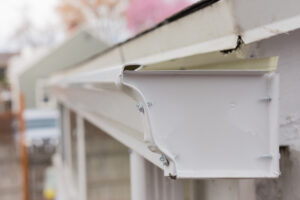With all the responsibilities of homeownership, it can be challenging to keep up with everything. To make matters easier, it helps to create a comprehensive roof inspection checklist ahead of time. Here are a few essentials your roofer should cover during an inspection.
General Items
It’s essential to maintain accurate records of residential roof inspections and any damage found. Over the years, your roofer will create a comprehensive history of your roof that can prove very useful for home insurance purposes or to plan for repairs. When performing an inspection, there are several general items to consider, including:
- Who Goes on the Roof: Each time professionals go onto your roof to examine its condition, they will note when the inspection occurred, why it was done, and who was involved. Keeping a record of roof work helps build a consistent track record of each inspection and ensures future inspections are scheduled properly.
- What’s the Condition of the Roof?: As professionals inspect each component of your roof, they will record any issues found and compare these notes to the previous inspection. The condition of particular parts of the roof should be ranked accordingly, ranging from good (no action needed) to bad (immediate action needed). Roofers will take photos of any damage found.
- Being Prepared: A roof inspection toolkit can make examining the roof for problems much easier. This roof inspection toolkit should include a checklist of concerns, a pen/pad for taking notes, and a camera for taking pictures. Blueprints of the roof and aerial photos are also helpful. In addition, it’s a good idea to have a tape measure and a flashlight ready.
Inspecting the Interior
Not all roofing problems are visible from the outside. For this reason, it’s essential to inspect your home’s interior and attic space for any issues caused by roof damage. Here are some areas of concern roofers examine during inspection:
- Examine the Walls: If there is a breach in the roof somewhere, moisture may begin to seep into the home and cause damage to the walls. Look for indications of mold, dark spots, or any peeling paint. It’s also common to see streaks of discoloration on the walls from where water leaked into the home.
- Where Can Moisture Enter: Vulnerable areas of the roof such as vents, chimneys, or flashing are more prone to leaking. Finding damp spots beneath these penetration points may indicate certain areas need to be resealed. This is especially important for homes that experience frequent rainfall.
- Other Areas of Concern: The attic space should have adequate ventilation to prevent the buildup of humidity. While inspecting the attic, roofers will look for any cracks in the rafters or sagging decking. They will also look out for any light shining through the roof.
- Look for Leaks: Take note of any leaks found and where they are located. Some leaks may not be readily apparent unless it’s raining, so keep an eye out for any dry stains or steaks from previous water damage. If leaks are found, be sure to take photos for your roofer to examine.
Issues to Look For on the Roof
It’s always best to leave inspecting the exterior of the roof to experienced professionals. They will safely and efficiently locate any areas of concern. A few common issues they will look for include:
- Visible Damage or Debris: Storms or high winds can potentially impact roofing shingles or the gutter system. Roofers will look for any obvious issues and remove debris from the roof during the inspection. Clogged gutters should be cleared to allow water to flow freely during heavy rain.
- Signs of Weathering: Roof flashing around chimneys and vents may begin to deteriorate with age, sometimes requiring replacement. Your roofer will also inspect the fascia, drip edges, and decking for signs of water damage such as warped or rotted wood. The metal components of a roof may begin to corrode and rust as well, so your roof inspection checklist should include monitoring these issues closely.
- Damaged Shingles: Broken or missing shingles should be replaced as soon as possible. During an inspection, roofers will also evaluate the overall condition of your roofing shingles and determine their expected remaining lifespan. They will also check your gutter system for granules from the shingles that could indicate that your shingles are beginning to deteriorate.
When you notice problems like these with your roof, contact a trusted local roofer for support. For expert support inspecting your home’s roof, rely on our team at Adam Vaillancourt Roofing for superior service. With over 15 years of experience serving homeowners throughout Southern New Hampshire and Northern Massachusetts, our seasoned roofers will ensure your roof is in optimal condition all year round. Call us to schedule a consultation today!




